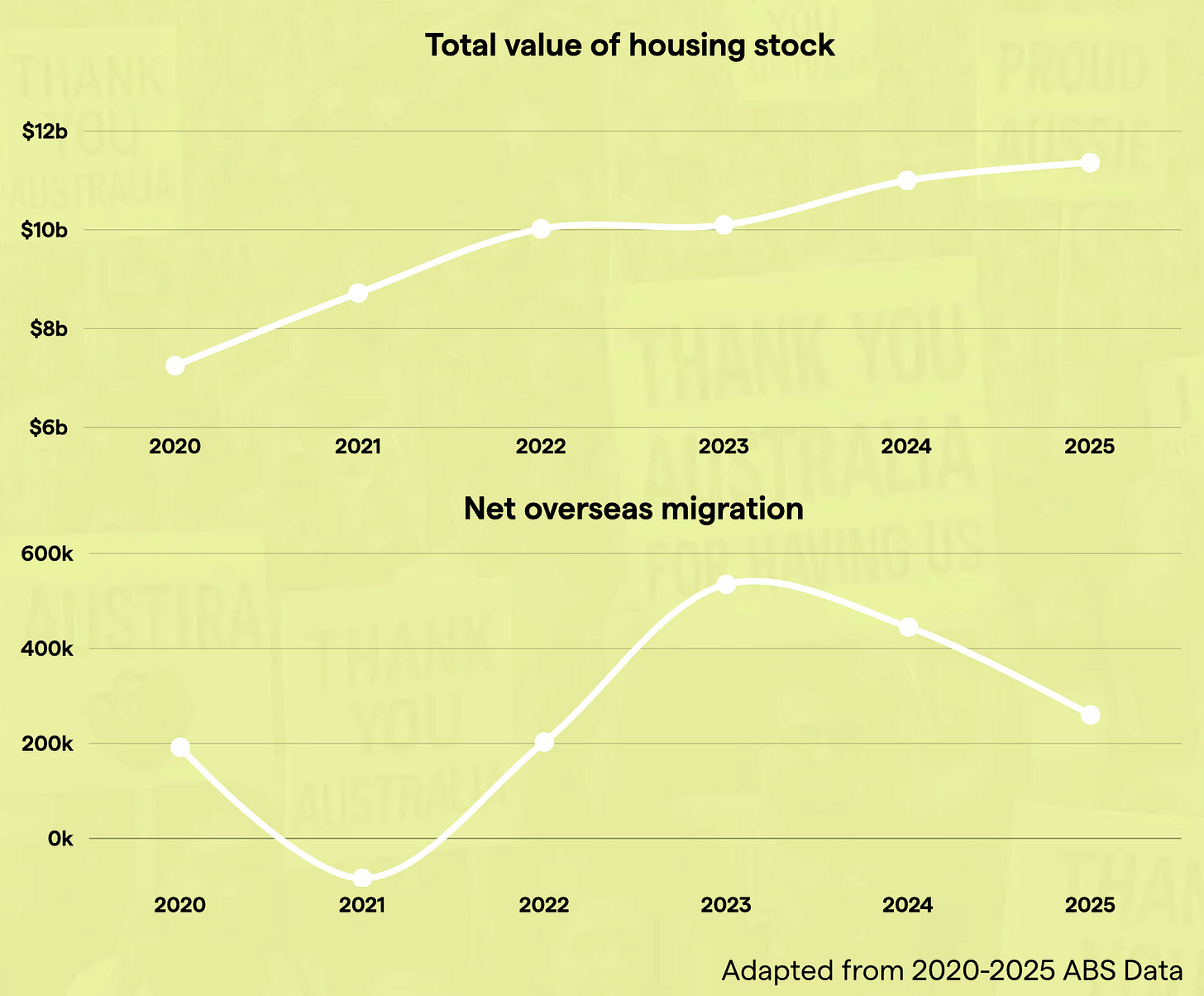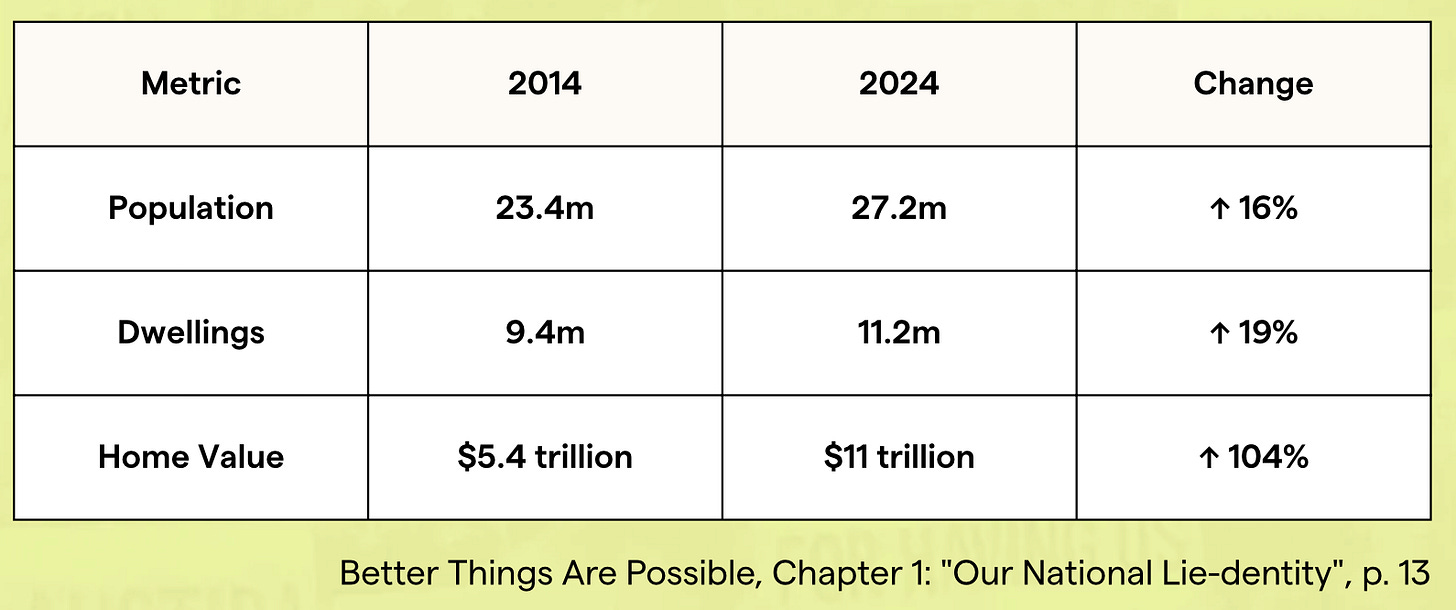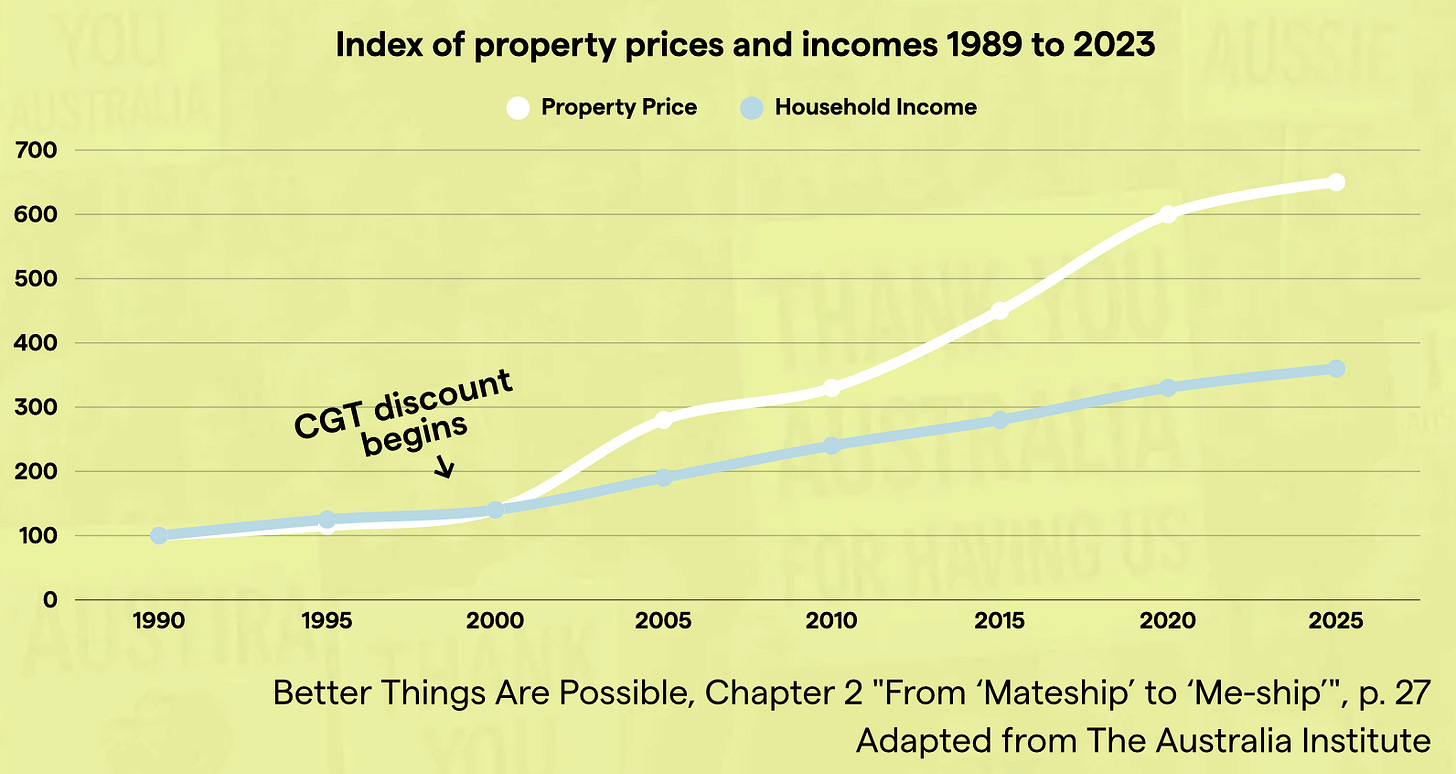Is "MASS IMMIGRATION" causing the housing crisis?
Politicians are saying it, the media is running with it, and your uncle is sharing it on Facebook...
If migration really drove house prices, the two lines would move together.
During COVID, our population shrank by 88,000 people (↓ demand) while construction stayed relatively high (↑ supply). By basic supply and demand logic, homes should have gotten cheaper or at least stabilised. Instead, prices increased by 25%.
Then a few years later, migration hit record highs (mostly a backlog of international students) and while prices did rise, they did so at a slower pace than they had during covid. So who’s really buying all the houses?
Are ‘foreigners’ buying all our houses?
What actually drove those prices? Record-low interest rates made borrowing really cheap, and our tax system rewards speculation.
So investors piled in and more than a quarter of homes on the east coast were bought with cash, no mortgage needed. Imagine that...
But about those “cashed-up foreigners” we’re always hearing about?
In 2022-23, foreign buyers spent $4.9b on property. Sounds big, but that’s just 0.045% of Australia’s $11 trillion market and less than 1% of all sales that year (5,360 out of 665,000). As of April 2025, foreign investors are banned from buying existing homes.
But isn’t it all about ‘supply and demand’?
Let’s assume everyone was housed in 2014 (apart from the 105,000 recored homeless on census night.) From 2014–2024, our population grew by 3.8 million people.
At 2014’s average household size (2.6), that should have required ~1.46 million new homes. At 2024’s smaller household size (2.5), it should have required ~1.52 million.
In reality, we built 1.8 million. A surplus of at least 280,000 homes, even after accounting for shrinking household sizes.
And remember: babies move into existing households. New migrants typically rent first, live in higher-density households, and take years to buy (if ever).
Yet homelessness increased and HOME VALUES DOUBLED (104%).
If supply and demand alone explained the housing crisis, this outcome would be impossible. So now we have to question, what kind of supply are we building?
What kind of supply are we actually building?
Developers follow the money. The more expensive the sale price, the more profit they make. Our tax system supercharges this.
Capital gains [profit from an investment] are taxed differently to income from working. In 1999, a flat 50% discount was introduced, whether you make $10,000 or $10 million. Negative gearing lets investors deduct property losses while they wait for those tax-discounted profits.
Developers and investors are rewarded more for building and buying higher-end apartments, not affordable family homes. They’re also incentivised to land bank or keep dwellings vacant, because the biggest gains come from appreciation in value, not rent. Luxury supply drags the whole market up because values are benchmarked against the top end.
Even when building costs stay the same, speculation keeps ratcheting values higher, making all housing more expensive (including homes that aren’t investments and don’t even benefit from the discount).
But we still have “mass immigration” right?
You might have seen posts that talk about “mass immigration” that we’re “letting in half a million immigrants a year.” Nope.
Net overseas migration peaked in 2023–24, but most were temporary entrants. Mainly international students returning after COVID border closures. It was a one-off catch-up, not a permanent trend.
The permanent migration program is capped at 185,000 places for 2024–25, with around 19,000 granted to people already here changing visa status. That leaves fewer than 170,000 genuinely new permanent arrivals who are mostly skilled workers filling job shortages, families reuniting, and refugees fleeing war or persecution.
Students and temporary migrants come and go. They rent, often in higher-density housing and don’t explain why home values doubled while supply outpaced population growth. Australia’s population is now growing by around 1–1.5% per year. Hardly an “uNsu$taiNaBle fl0od of imMigrAnts!!!!”.
So, now you’ve got the facts: let's stop scapegoating immigrants, quit blaming 'supply and demand' and focus on reforming our tax system, which rewards rampant speculation and supercharges inequality.
I go into waaaaaay more detail about the housing crisis and solutions (as well as exploring gender, the climate crisis and our political system) in my book Better Things Are Possible - available for preorder now! Out Sept 2. ✌️







We have a distribution problem
As Jack Lang said 'always back self interest, you know its trying', and it will tell you that the problem of house price inflation is due to the bloody migrants. No scruples at all. Stinko. Just have a look at the comments in the mainstream press. But is a bot responsible? Wouldn't put it past them.